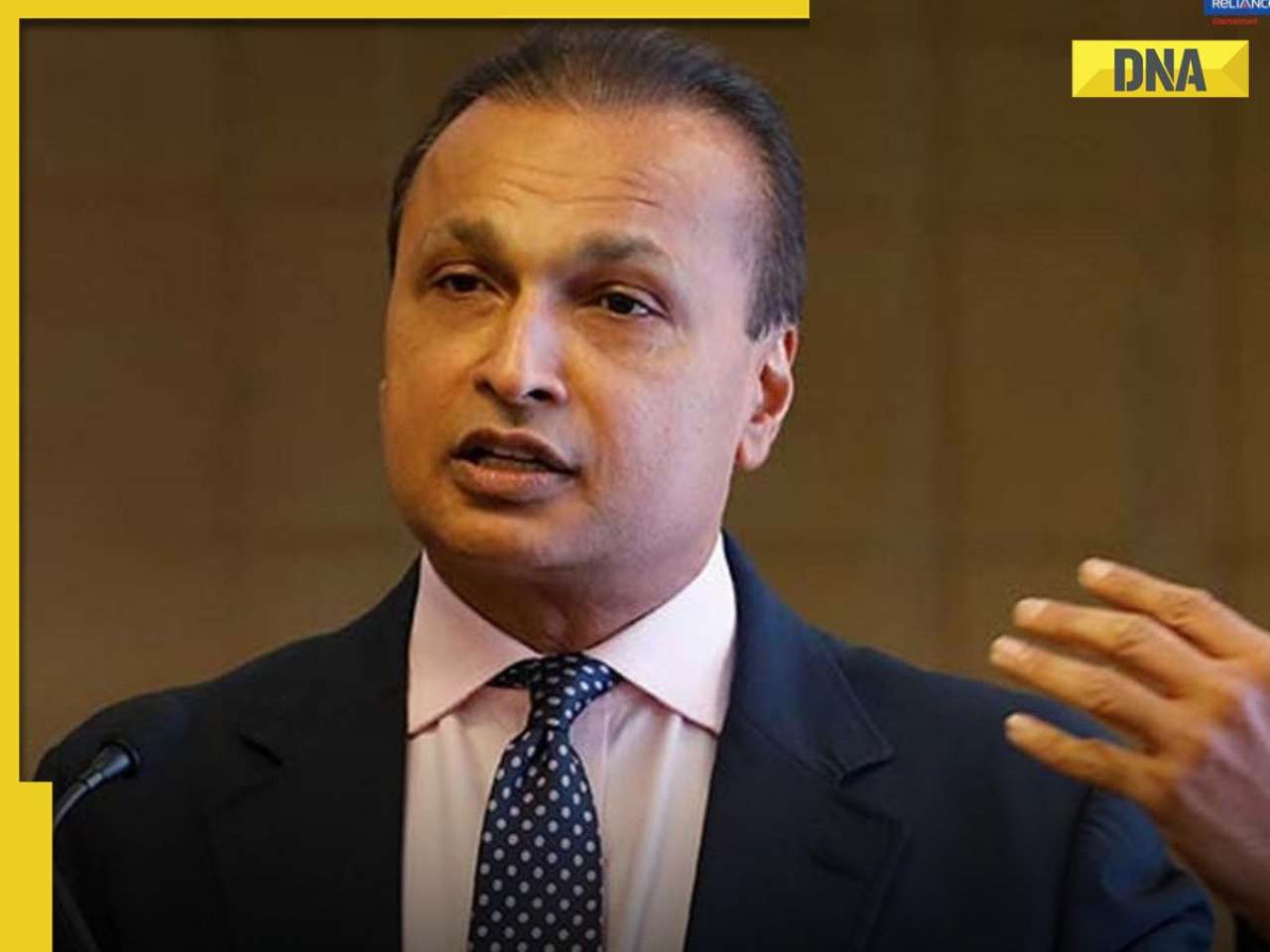If two-day smartphone battery life sounds like music to your ears, Huawei appears to have just the answer
Here’s a smartphone category that is right now molten--the enticing 10K price barrier. From the smartphone stalwarts to the young upstarts, its a maelstrom of products that are vying for attention.
Irrespective of your choice, the basic requirements for the overwhelming majority of cellphone users are fairly defined: a battery that lasts at least a full working day, a reasonably sharp screen, and a camera that takes decent photos. Anything else is icing. These days, the entry level has been unarguably set at Rs 7,000 (well, Rs 6,999 precisely)--both the Moto E and the Redmi 2 are at it tooth and nail here, with several other brands snapping at their heels. Then there’s Rs 10,000 price limit, which is where things get interesting: the variation in features of phones at this price is surprisingly wide. Some tilt the scales toward better gaming performance, some offer heightened battery life, while others manage to pack slightly larger and higher resolution screens. There’s something for everyone.

Which brings us to the Huawei (pronounced “who-ah-weigh”) Honor 4X that was launched last week along with its bigger sibling the Honor 6 Plus (of course the latter is cocking a snook at Apple’s flagship phone). The Honor 4X is priced at Rs 10,499 and is a 5.5-inch dual SIM LTE phone. Much like Xiaomi’s Redmi Note 4G--in fact they’re virtually identical in specification--this one is characterized by a hefty battery and is otherwise powered by mainstream-level hardware: an ideal formula for a device that offers prolonged battery life with decent performance for everyday tasks. Let’s step up and look closer.
At a resolution of 720 x 1280 pixel, this phone’s 5.5-inch screen is nowhere near retinal display: it packs about 267 pixels per inch, a level where an average person cannot discern individual pixels on screen. Also the visuals are surprisingly clean and crisp. Also unlike other brands that are wont to bump up color saturation to make images ‘pop’, this one was balanced, with excellent brightness and contrast and natural colors.

The core hardware is mainstream level--the phone’s Snapdragon 410 based platform makes no bones about this fact. But this new part is more power efficient compared to its predecessor while featuring improvements in processing efficiency, amply demonstrated as we used the phone. The phone’s Emotion UI, which is a skinned version of Android 4.4.4 (monthly updates are promised, though no word on Lollipop availability) packs neat features such as launching common apps from the lock screen using gestures and shortcut buttons, an on-screen button for quick access to common controls and more. While there is 8GB of specified built-in memory, only a shade over 4GB is available for use, which is a bit of a downer. There is a microSD card, but which can take only a 32 GB card.

During extensive daily use consisting of always-on WiFi, 3G data, continuous Bluetooth connectivity to a smartwatch and using a range of web, productivity apps and gaming, the phone refused to drain even two days being unplugged (see screenshot). This is unprecedented stuff. Its 3,000 mAH battery coupled with its power-efficient Snapdragon 410 hardware platform along with software-based optimizations (like when the phone regularly notifies you of apps that are overly power-hungry) all clearly do a spectacular job in translating into real-world endurance.
Quick specs
Network: GSM/HSPA/LTE - band 1(2100), 3(1800), 38(2600), 39(1900), 40(2300), 41(2500)
SIM: Dual SIM, Dual LTE
Screen: 720 x 1280 pixels, 5.5 inches (~267 ppi pixel density)
OS: Android 4.4.4 KitKat
Key hardware: Quad-core 1.2 GHz Cortex-A53 processor with Adreno 306 graphics (Qualcomm MSM8916 Snapdragon 410), 2 GB RAM, 8 GB storage expandable to 32 GB via microSD
Camera: 13MP rear, 5MP front
Wireless: Wi-Fi 802.11 a/b/g/n, Wi-Fi Direct, Bluetooth 4.0
Weight: 165 gms
Battery: 3,000mAH
Price: Rs 10,499
On the photo front, its 13 MP rear camera performed reasonably well across scenarios, nothing to set it apart though. These days features like ‘beauty enhancers’ and the like are all the rage; unfortunately this phone succumbs and includes such gimmicks. I found them all but useless, but they’re great for getting a kick out of. It also has an ‘all-focus’ mode that lets you choose the focus point in your photo after taking the shot. I found this feature worked erratically--clearly it isn’t Lytro-level image processing, but appeared to be some type of pseudo blur-applying algorithm. The panorama and HDR modes did function as expected, and overall the camera was snappy to respond, but overall the primary camera is very middling. The secondary camera is 5MP, resulting in higher-resolution selfies, but is average so far as front cameras go.
This phone is clearly optimized for staying alive between charges, while delivering all the performance that general smartphone use mandates. There are a few downsides like the fact that the battery is fixed, so it isn’t user-changeable. But the ability to use a smartphone without worrying about it dying out over the course of the day is indeed refreshing. And when it lasts for over two days at this price? It’s quite a breakthrough. For the 10K price brigade, the Honor 4X is a first among equals.
What we liked: Truly stellar battery life, sharp screen, good UI optimization and features
What we didn’t: Average camera, non-removable battery, 4GB of available internal memory and only up to 32 GB microSD cards supported
![submenu-img]() This singer left Air Force, sang at churches, became superstar; later his father killed him after...
This singer left Air Force, sang at churches, became superstar; later his father killed him after...![submenu-img]() Indian-origin man says Apple CEO Tim Cook pushed him...
Indian-origin man says Apple CEO Tim Cook pushed him...![submenu-img]() Anil Ambani’s Rs 96500000000 Reliance deal still waiting for green signal? IRDAI nod awaited as deadline nears
Anil Ambani’s Rs 96500000000 Reliance deal still waiting for green signal? IRDAI nod awaited as deadline nears![submenu-img]() Most popular Indian song ever on Spotify has 50 crore streams; it's not Besharam Rang, Pehle Bhi Main, Oo Antava, Naina
Most popular Indian song ever on Spotify has 50 crore streams; it's not Besharam Rang, Pehle Bhi Main, Oo Antava, Naina![submenu-img]() Did Diljit Dosanjh cut his hair for Amar Singh Chamkila? Imtiaz Ali reveals ‘he managed to…’
Did Diljit Dosanjh cut his hair for Amar Singh Chamkila? Imtiaz Ali reveals ‘he managed to…’ ![submenu-img]() DNA Verified: Is CAA an anti-Muslim law? Centre terms news report as 'misleading'
DNA Verified: Is CAA an anti-Muslim law? Centre terms news report as 'misleading'![submenu-img]() DNA Verified: Lok Sabha Elections 2024 to be held on April 19? Know truth behind viral message
DNA Verified: Lok Sabha Elections 2024 to be held on April 19? Know truth behind viral message![submenu-img]() DNA Verified: Modi govt giving students free laptops under 'One Student One Laptop' scheme? Know truth here
DNA Verified: Modi govt giving students free laptops under 'One Student One Laptop' scheme? Know truth here![submenu-img]() DNA Verified: Shah Rukh Khan denies reports of his role in release of India's naval officers from Qatar
DNA Verified: Shah Rukh Khan denies reports of his role in release of India's naval officers from Qatar![submenu-img]() DNA Verified: Is govt providing Rs 1.6 lakh benefit to girls under PM Ladli Laxmi Yojana? Know truth
DNA Verified: Is govt providing Rs 1.6 lakh benefit to girls under PM Ladli Laxmi Yojana? Know truth![submenu-img]() Alia Bhatt wears elegant saree made by 163 people over 1965 hours to Met Gala 2024, fans call her ‘princess Jasmine’
Alia Bhatt wears elegant saree made by 163 people over 1965 hours to Met Gala 2024, fans call her ‘princess Jasmine’![submenu-img]() Jr NTR-Lakshmi Pranathi's 13th wedding anniversary: Here's how strangers became soulmates
Jr NTR-Lakshmi Pranathi's 13th wedding anniversary: Here's how strangers became soulmates![submenu-img]() Streaming This Week: Heeramandi, Shaitaan, Manjummel Boys, latest OTT releases to binge-watch
Streaming This Week: Heeramandi, Shaitaan, Manjummel Boys, latest OTT releases to binge-watch![submenu-img]() Remember Ayesha Kapur? Michelle from Black, here's how actress, nutrition coach, entrepreneur looks after 19 years
Remember Ayesha Kapur? Michelle from Black, here's how actress, nutrition coach, entrepreneur looks after 19 years![submenu-img]() Remember Heyy Babyy's cute 'Angel' Juanna Sanghvi? 20 year-old looks unrecognisable now, fans say 'her comeback will...'
Remember Heyy Babyy's cute 'Angel' Juanna Sanghvi? 20 year-old looks unrecognisable now, fans say 'her comeback will...'![submenu-img]() DNA Explainer: Why Harvey Weinstein's rape conviction was overturned, will beleaguered Hollywood mogul get out of jail?
DNA Explainer: Why Harvey Weinstein's rape conviction was overturned, will beleaguered Hollywood mogul get out of jail?![submenu-img]() What is inheritance tax?
What is inheritance tax?![submenu-img]() DNA Explainer: What is cloud seeding which is blamed for wreaking havoc in Dubai?
DNA Explainer: What is cloud seeding which is blamed for wreaking havoc in Dubai?![submenu-img]() DNA Explainer: What is Israel's Arrow-3 defence system used to intercept Iran's missile attack?
DNA Explainer: What is Israel's Arrow-3 defence system used to intercept Iran's missile attack?![submenu-img]() DNA Explainer: How Iranian projectiles failed to breach iron-clad Israeli air defence
DNA Explainer: How Iranian projectiles failed to breach iron-clad Israeli air defence![submenu-img]() This singer left Air Force, sang at churches, became superstar; later his father killed him after...
This singer left Air Force, sang at churches, became superstar; later his father killed him after...![submenu-img]() Most popular Indian song ever on Spotify has 50 crore streams; it's not Besharam Rang, Pehle Bhi Main, Oo Antava, Naina
Most popular Indian song ever on Spotify has 50 crore streams; it's not Besharam Rang, Pehle Bhi Main, Oo Antava, Naina![submenu-img]() Did Diljit Dosanjh cut his hair for Amar Singh Chamkila? Imtiaz Ali reveals ‘he managed to…’
Did Diljit Dosanjh cut his hair for Amar Singh Chamkila? Imtiaz Ali reveals ‘he managed to…’ ![submenu-img]() Watch: Arti Singh gets grand welcome at husband Dipak's house with fairy lights and fireworks, video goes viral
Watch: Arti Singh gets grand welcome at husband Dipak's house with fairy lights and fireworks, video goes viral![submenu-img]() Meet actress, who belongs to family of superstars, quit films after 19 flops, no single hit in 9 years; is still worth…
Meet actress, who belongs to family of superstars, quit films after 19 flops, no single hit in 9 years; is still worth…![submenu-img]() IPL 2024: Suryakumar Yadav's century power MI to 7-wicket win over SRH
IPL 2024: Suryakumar Yadav's century power MI to 7-wicket win over SRH![submenu-img]() DC vs RR, IPL 2024: Predicted playing XI, live streaming details, weather and pitch report
DC vs RR, IPL 2024: Predicted playing XI, live streaming details, weather and pitch report![submenu-img]() Watch: Team India’s new jersey for T20 World Cup 2024 unveiled
Watch: Team India’s new jersey for T20 World Cup 2024 unveiled![submenu-img]() DC vs RR IPL 2024 Dream11 prediction: Fantasy cricket tips for Delhi Capitals vs Rajasthan Royals
DC vs RR IPL 2024 Dream11 prediction: Fantasy cricket tips for Delhi Capitals vs Rajasthan Royals![submenu-img]() IPL 2024: Kolkata Knight Riders take top spot after 98 runs win over Lucknow Super Giants
IPL 2024: Kolkata Knight Riders take top spot after 98 runs win over Lucknow Super Giants![submenu-img]() Indian-origin man says Apple CEO Tim Cook pushed him...
Indian-origin man says Apple CEO Tim Cook pushed him...![submenu-img]() Meet man whose salary was only Rs 83 but his net worth grew by Rs 7010577000000 in 2023, he is Mukesh Ambani's...
Meet man whose salary was only Rs 83 but his net worth grew by Rs 7010577000000 in 2023, he is Mukesh Ambani's...![submenu-img]() Job applicant offers to pay Rs 40000 to Bengaluru startup founder, here's what happened next
Job applicant offers to pay Rs 40000 to Bengaluru startup founder, here's what happened next![submenu-img]() Viral video: Family fearlessly conducts puja with live black cobra, internet reacts
Viral video: Family fearlessly conducts puja with live black cobra, internet reacts![submenu-img]() Woman demands Rs 50 lakh after receiving chicken instead of paneer
Woman demands Rs 50 lakh after receiving chicken instead of paneer





































)





)
)
)




)
)
)
)
)
)